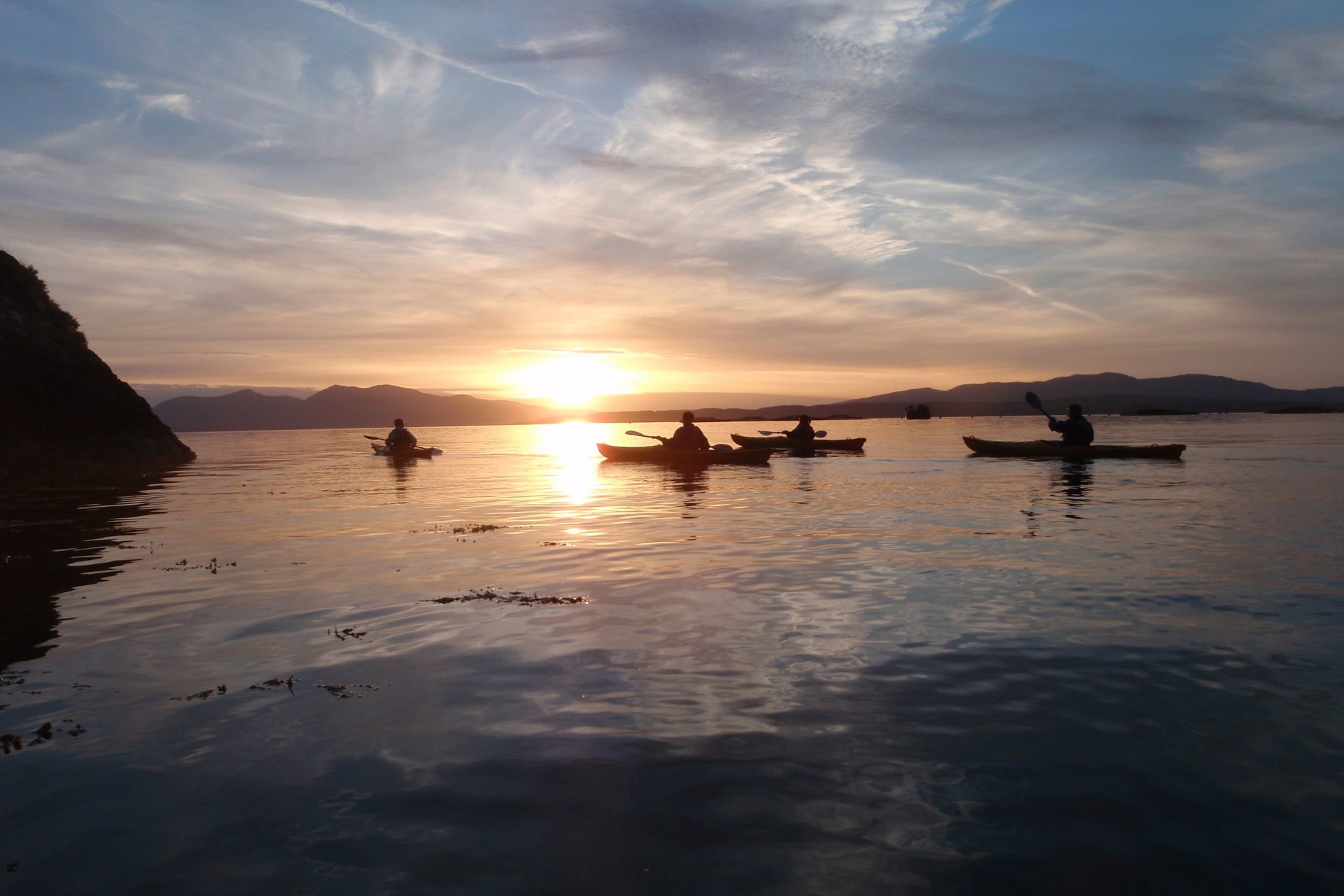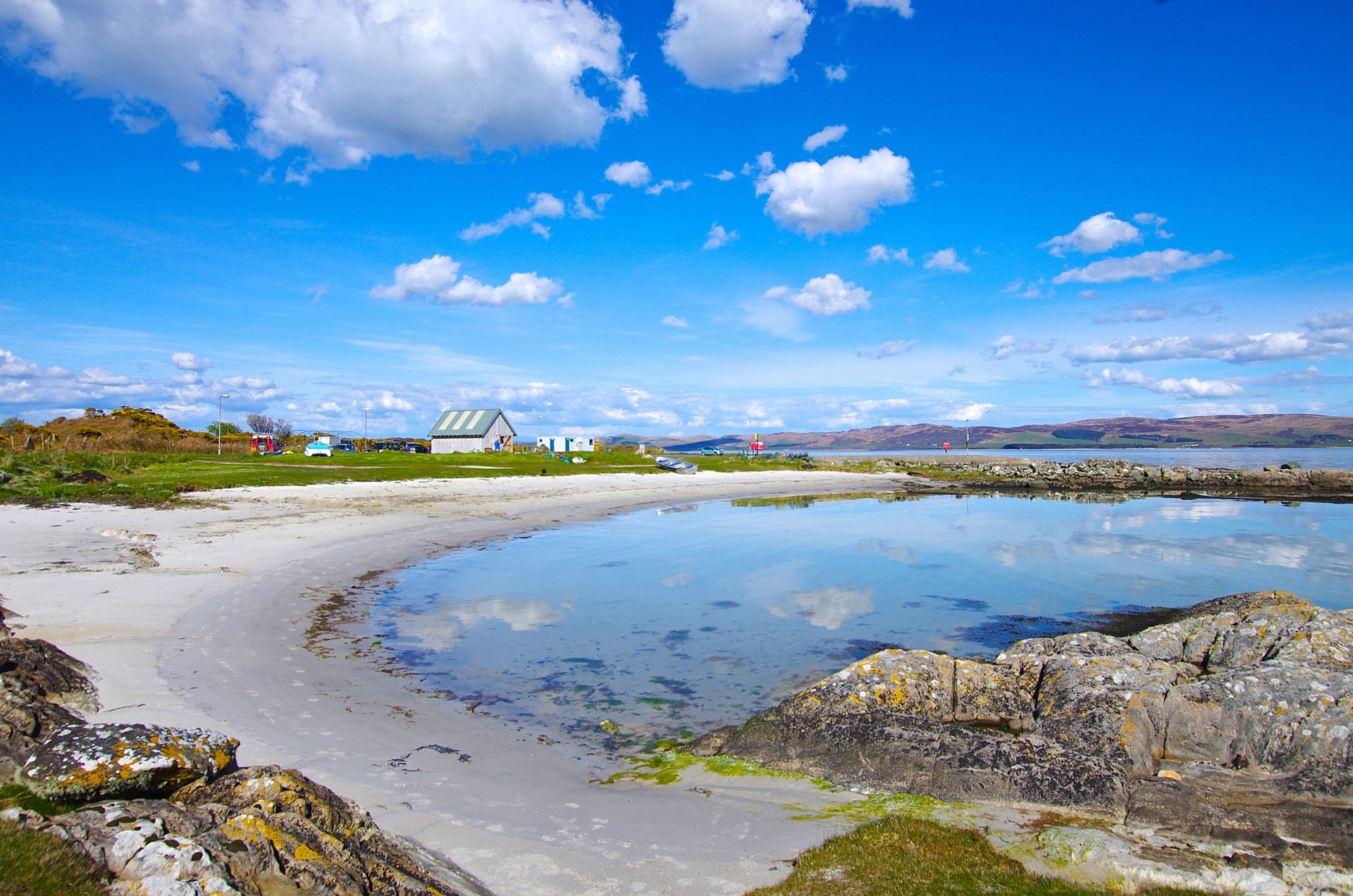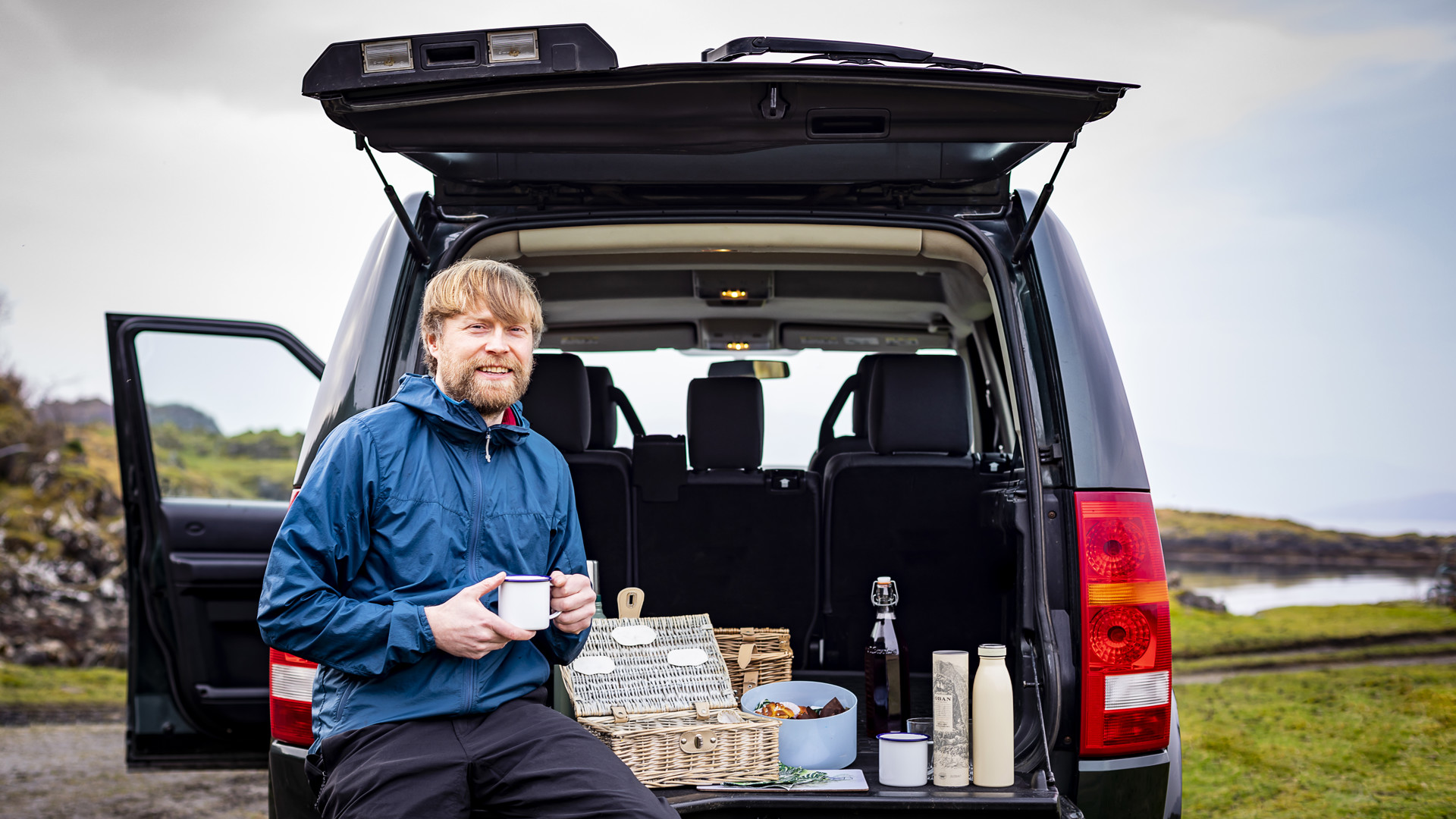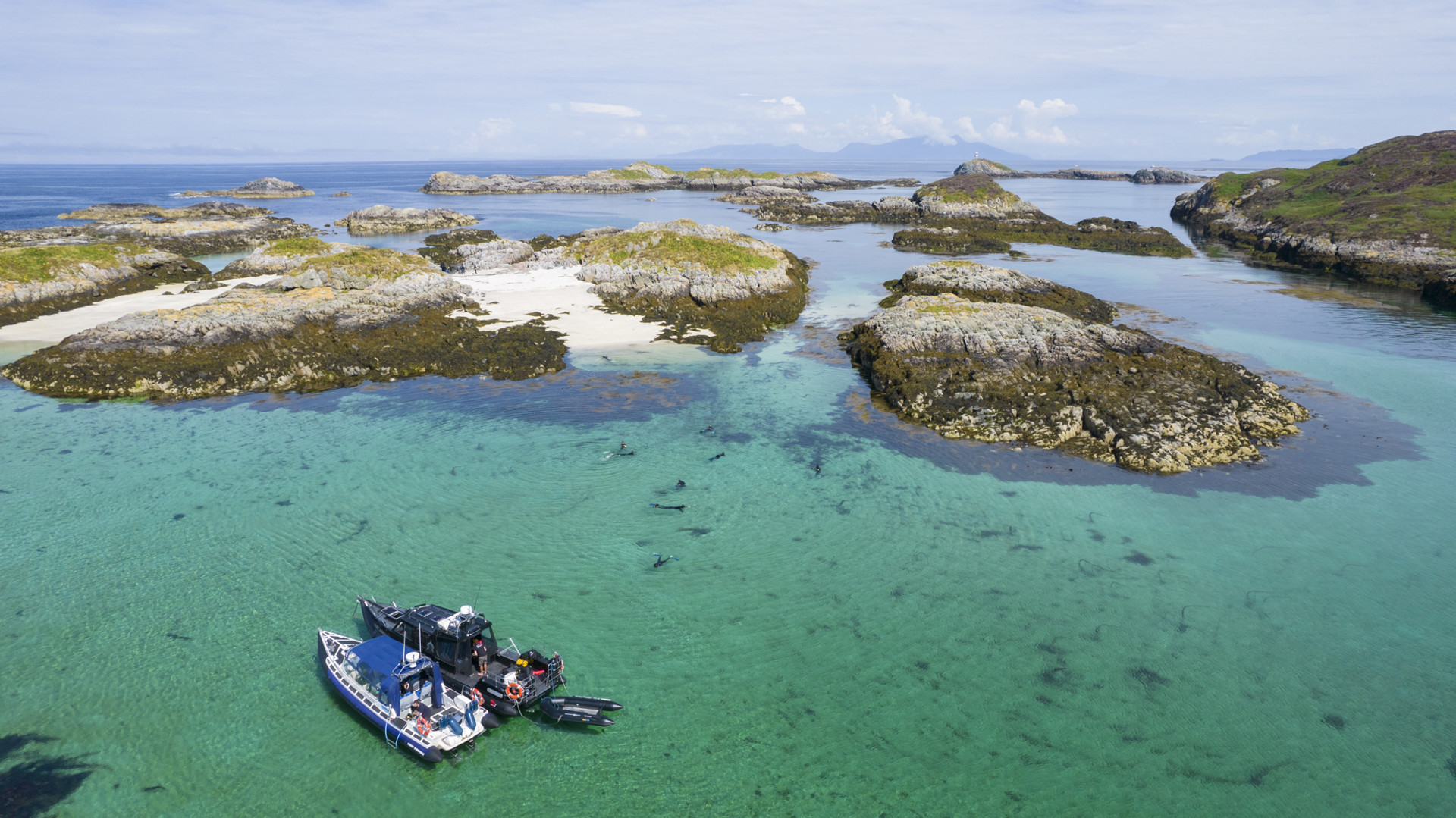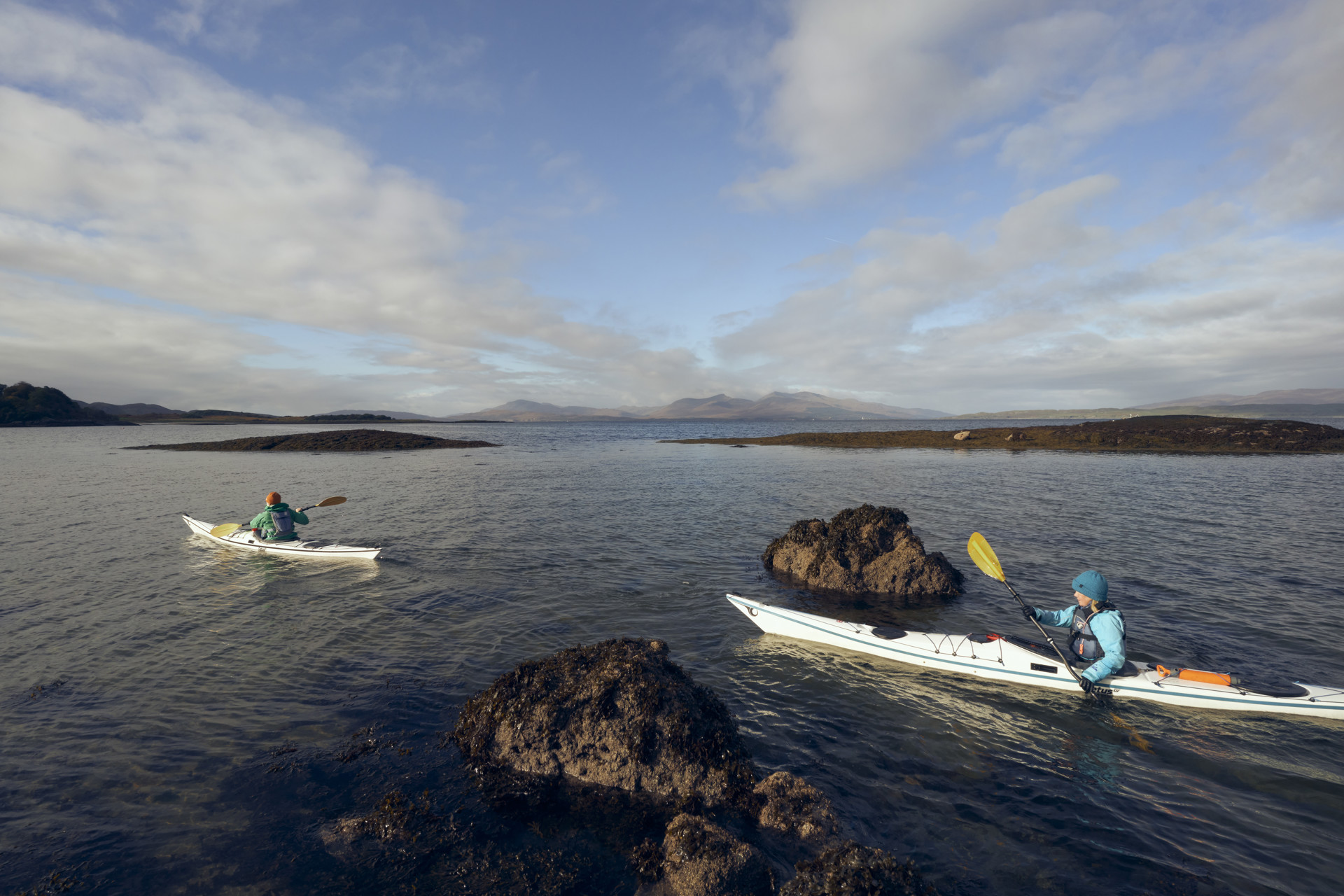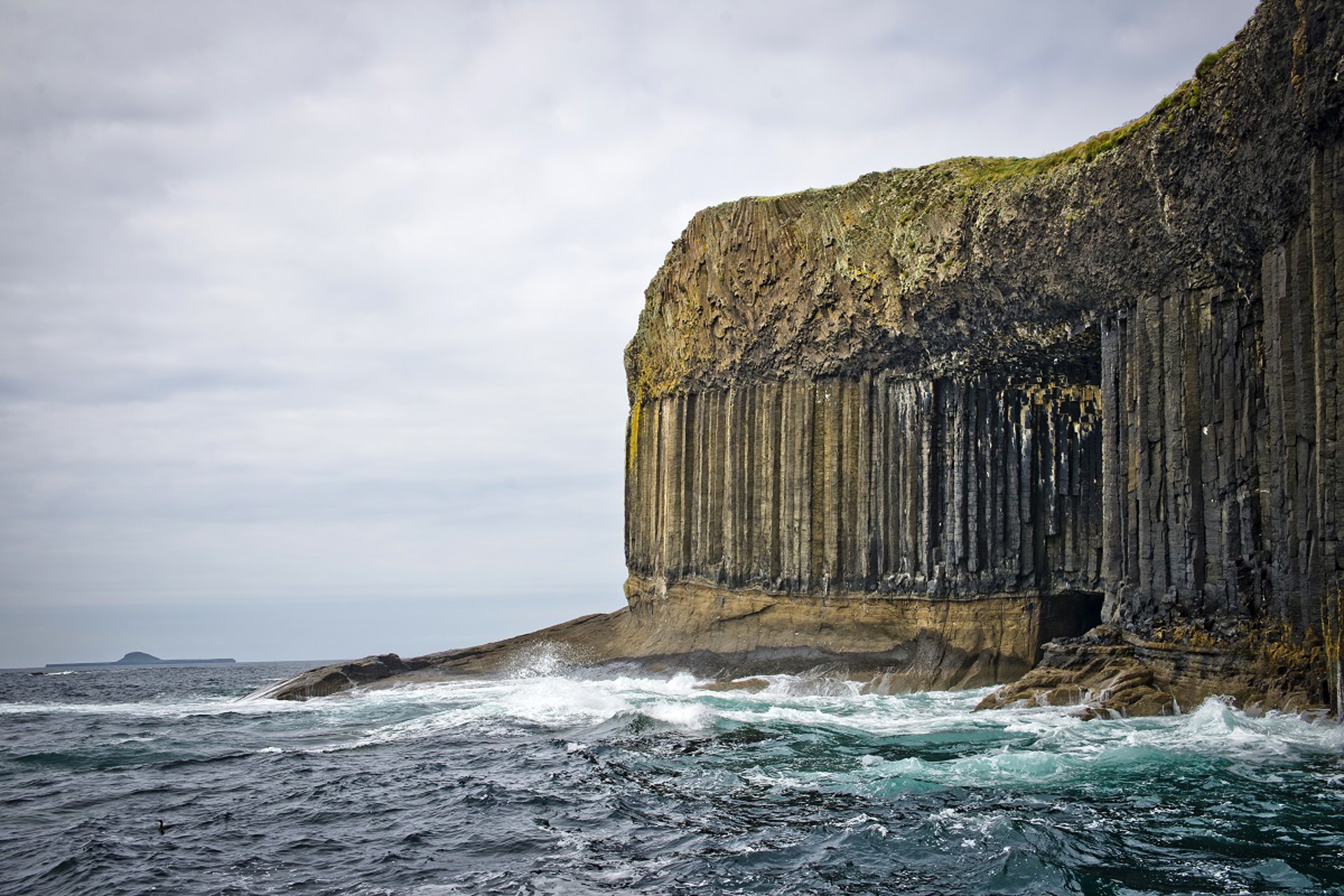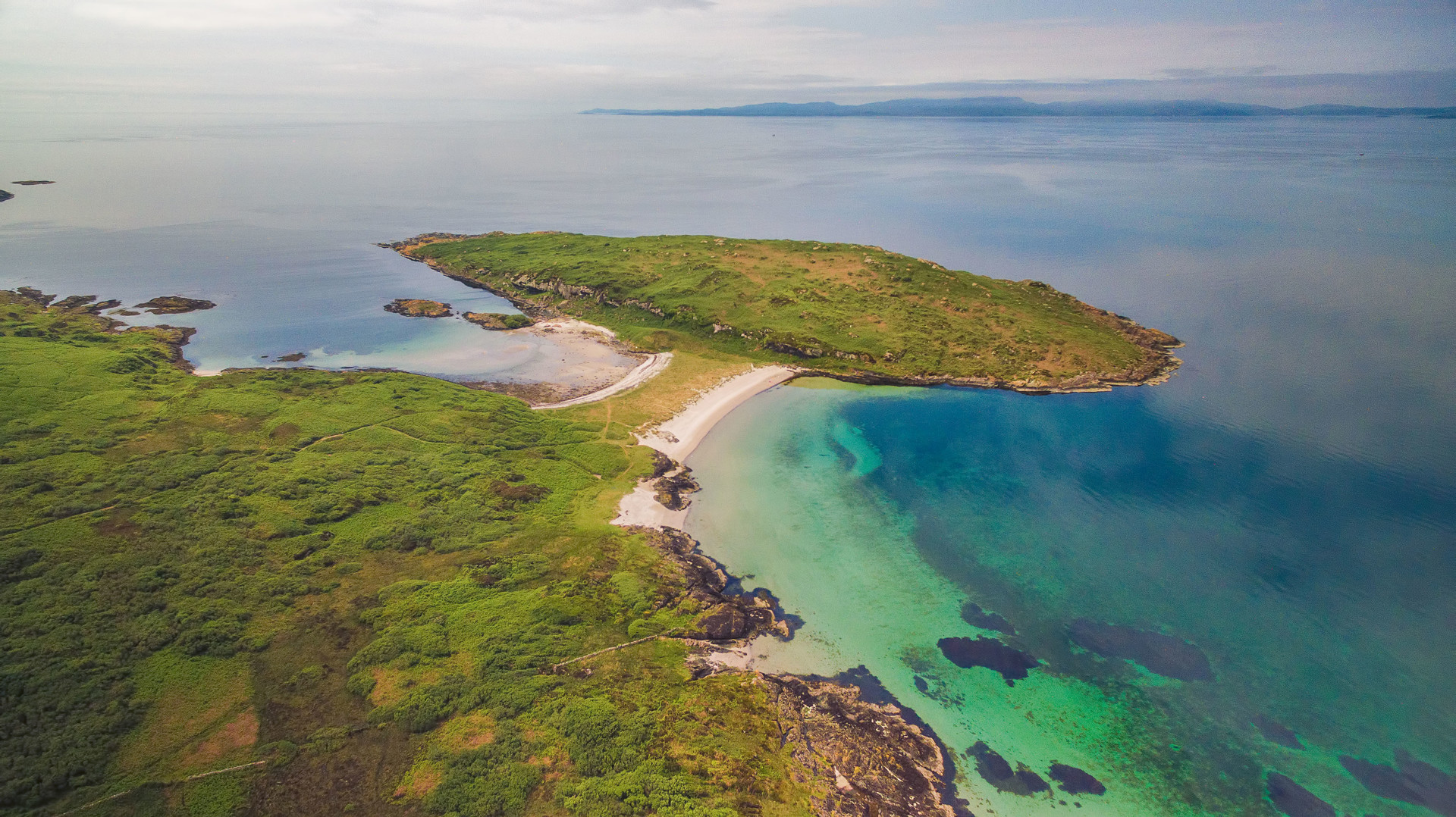
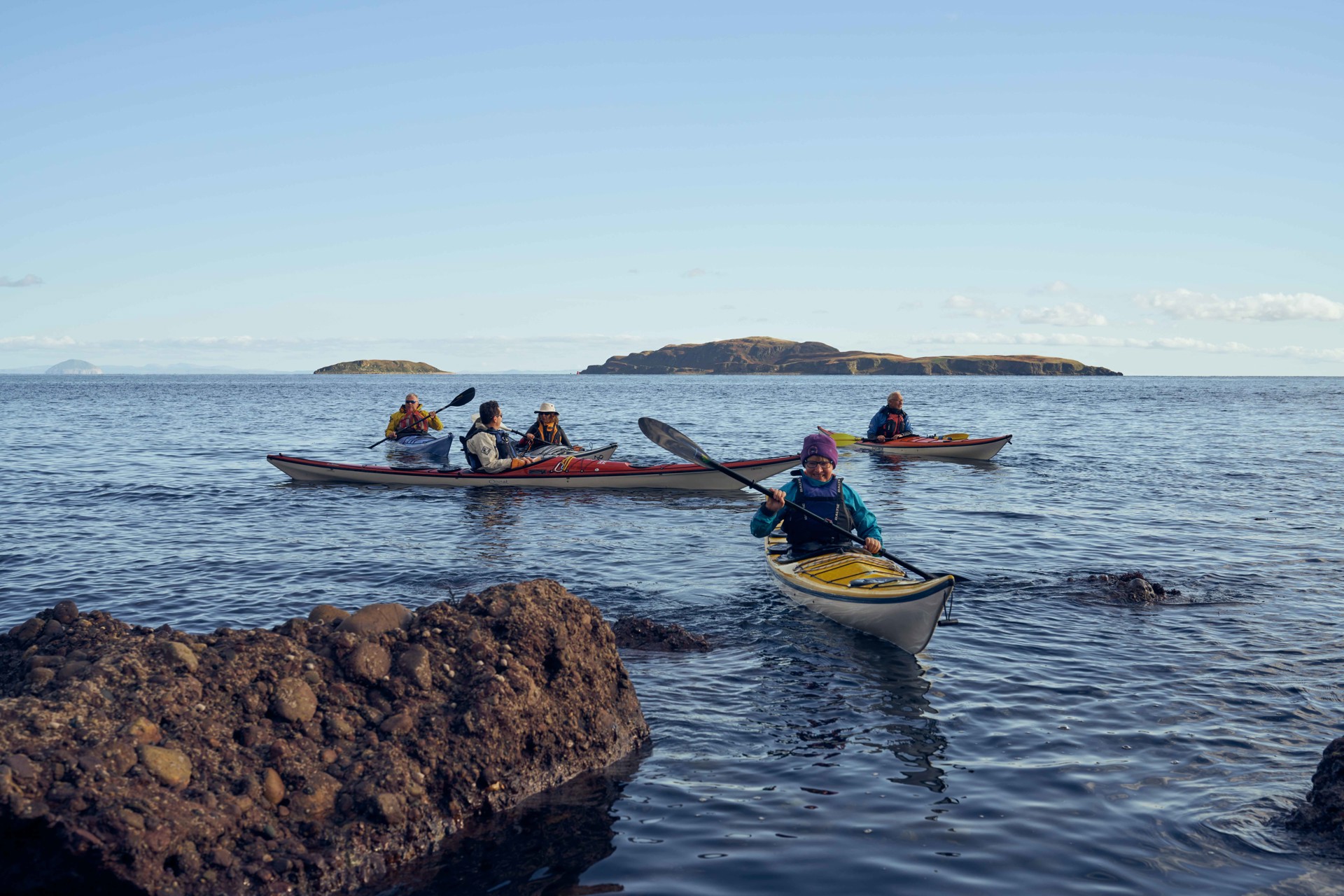


Argyll & the Isles - The best spots for kayaking and canoeing in Scotland
Scotland's Adventure CoastArgyll & the Isles boasts some of the best kayaking spots in Scotland, from sheltered lochs and canal paddles to the open sea along the Argyll Sea Kayak Trail and even white-water river adventures.
The area is tailormade for kayaking and canoeing. Paddle your cares away along 3,723KM of coastline, over 40 freshwater and sea lochs, several easily accessed beaches and rivers and Britain’s most beautiful shortcut, the Crinan Canal.
For nature lovers, there are seals, porpoise, diving gannets and eagles. Venture inland and you might spot one of Scotland’s otters. If you’re the adventurous sort, the wild waters of the Gulf of Corryvreckan and the tidal Falls of Lora, will thrill and delight. You can even kayak out to Staffa and into the ethereal beauty of Fingal’s Cave.
Why try kayaking?
Kayaking and canoeing are one of the rare activities that you can equally enjoy gently or strenuously. It gets you on the water, brings you closer to nature and can be as sociable or as solitary as you choose. Classed as a low impact sport, the physical and mental health benefits are incredible. Enjoying the water is good for the mind, body and soul.
Plus it’s is easily accessible for all the family. Hire a kayak and paddle, don a wet suit, buoyancy aid and helmet, get some hot tips from the hire company and you’re ready to go!
Safety First
Kayaking is a wonderful way to explore the waters but it’s not without risk. Scotland's coastline offers some of the best sea kayaking opportunities in the world, but anyone venturing out needs to understand the risks and paddle safely.
British Canoeing has been working with the RNLI to publish safety information that sets out the steps you need to take to stay safe on the sea.
Keep safe by following the following safety tips from British Canoeing.
To stay safe on the sea:
- Always carry a means of calling for help and keep it within reach: If it can't be reached in an emergency, it's no help.
- Wear a buoyancy aid.
- Check the weather and tides. Understand the effect they will have on you.
- Tell someone where you’re going and when you'll be back.
- Wear appropriate clothing for the conditions and your trip.
- Get some training: Contact your local canoe club or outdoor centre and look for coaching sessions run by clubs and operators.
- Every year there are numerous incidents and near misses with kayaks and canoes. Follow the safety advice and make sure you stay safe.
Best Sea Kayaking Spots in Argyll & the Isles
Local RecommendationsWith miles of glorious coastline and sparkling waters scattered with picturesque, inhabited islands, Oban is one the best places in Scotland for sea kayaking. It’s no coincidence that Ganavan Sands, just north of Oban, is the start of the Argyll Sea Kayak Trail.
Try:
- Loch Awe - The north shore of Scotland’s longest freshwater loch runs east west for around 8km, terminating at the west end with a conventional hydro-electric dam across the River Awe. It offers exciting but relatively safe paddling in good weather conditions. Explore the small islands and inlets and, at the east end, the majestic ruins of Kilchurn Castle.
- Explore the Islands – the islands of Kerrera and Lismore are both close to Oban, while further south, the Slate Islands of Seil (across Clachan Bridge, the ‘Bridge over the Atlantic’), Easdale and Luing, plus Scarba, Shuna and the Garvellachs offer wonderful kayaking experiences. They are all different in geology and geography, with towering cliffs, enormous sea caves, vertical volcanic intrusions and empty sandy beaches.
For the more adventurous and experienced kayaker:
- Falls of Lora – situated around 9km northeast of Oban, during high spring tides, this is a tidal wave under Connel Bridge. It’s fun, but serious. The falls are created as the tide ebbs out over a rock shelf. It can be unpredictable with boil patterns and whirlpools so should only be attempted by kayakers who are skilled, experienced, knowledgeable and adventurous.
- Gulf of Corryvreckan – this narrow strait of water between the islands of Jura and Scarba boasts an impressive whirlpool – the world’s third largest - and is only safe to cross during a narrow period of slack water. It is one of the best places to spot wildlife because the turbulent tides and currents create feeding areas for porpoises, dolphins and whales. On rare occasions, there are even white-tailed eagles to be spotted.
Crossing the Gulf is the ultimate daredevil challenge and should only be attempted by sea kayakers who are skilled, experienced, knowledgeable and adventurous.
For kayaking equipment to buy and hire, tuition and guided tours, check out Outside Edge, Sea Kayak Scotland, Sea Freedom Kayak and Sea Kayak Oban.
A port and marina on the west coast of Argyll, Craobh Haven is popular place to sail. There is a small, sheltered bay which is ideal for sea kayaking novices.
Be sure to stay in the bay as the wider area is not suitable for paddling without extensive local knowledge.
Craobh Haven Watersports rent out sit-on-top kayaks, wetsuits and buoyancy aids. They allocate an area to kayak in so that you don’t have to worry about underwater obstacles, tides or winds.
With its extensive open waters and secluded beaches surrounded by lush forests and woodlands, the Cowal Peninsula has a real sense of rugged remoteness. Porpoises and seals swim these waters and, if you venture inland, you might even spot one of Scotland’s iconic red squirrels.
Try:
- Otter Ferry - on the banks of Loch Fyne, is a great spot to launch. A perfect longer paddle is to follow the intricate coastline south and round to Ostel Bay – a wide sheltered beach with sand dunes and stunning views across to Arran. (You can also launch at nearby Portavadie).
- Dunoon - Dunoon’s Holy Loch Marina is surrounded by stunning scenery and the sheltered coastal waters provide the perfect location for both beginner and advanced kayakers. To the south of Dunoon at West Bay there is easy access to the water at the Argyll Sea Kayak Trail launch point.
Sea Kayak Argyll and Bute, based at Toward just south of Dunoon, offer introductory sea kayaking courses and a range of guided tours.
The large island of Mull, with its long indented coastline and sea lochs offers contrasting paddling conditions and experiences. Otters, seals, porpoises and playful dolphins can often be spotted in the Sound of Iona.
There are several good launch points with convenient parking and you’re likely to of spot wildlife both on the waters and in the skies.
Bendoran Watersports at Bunessan on the Ross of Mull offers sit on and sea kayak hire, lessons and guided expeditions exploring the rugged coastline.
Tiree is Argyll’s top spot for water sports. It’s pristine white sands and near-guaranteed wind and waves make it the perfect place to learn and practice your surfing skills. Paddling in the surf on a sit-on-kayak is a great experience – you’ll get wet feet but it’s a lot of fun!
This is a wonderful coastline to paddle around, with crystal-clear waters and small rocky islands. You might even be lucky and spot a basking shark offshore!
There are several kayaking and canoe spots around the island with easy parking near to launch spots.
Try:
- Loch Bhasapol - an inland loch with calm waters which is perfect for novice paddlers.
- Gott Bay - an easily accessible long sandy bay popular with families and with marked out parking areas to protect the beautiful Machair.
- Crossapol Beach – with a long white sandy beach and views across to Mull, Crossapol is usually free of seaweed and has marked parking areas.
Wild Diamond, based at Loch Bhasapol, hire out single, double and triple kayaks.
Best Loch Kayaking and Canoeing in Argyll & the Isles
Local RecommendationsFor many people Loch Lomond is the most beautiful loch in Scotland, if not the world. To the south there are a myriad of islands, small and large, hilly and flat, wooded and open. To the north, the mountains on each side get bigger and the loch becomes more and more fjord-like. The iconic Ben Lomond, often with visible snow, towers over all parts of the Loch. The villages on either side, Balmaha, Rowardennan, Luss, Tarbet are charming and there are grand houses and castles to spot as you paddle. There are several good access points on the west shore. Canoe and kayak hire is available at Luss with Loch Lomond Leisure and also at Loch Lomond Shores.
Perfect for a peaceful paddle, Loch Goil is a nature lovers utopia. Spot seal colonies, porpoises, eider ducks, gannets oyster catchers, shags, cormorants, buzzards & occasionally, even eagles. And keep an eye out for starfish under the waves when paddling around the 14th century ruins of Carrick Castle.
Located in the centre of the beautiful Argyll Forest Park on the Cowal Peninsula, Loch Eck is a freshwater loch offering a unique view of inland Argyll. At the southern end there is portage access to the River Eachaig from which you can see the Benmore Botanic Garden, the Holy Loch and the ‘the Paper Caves’ where the Earl of Argyll hid family papers when leading a Protestant rebellion.
The large island of Mull, with its long indented coastline and sea lochs offers contrasting paddling conditions and experiences. Otters, seals, porpoises and playful dolphins can often be spotted in the Sound of Iona.
There are several good launch points with convenient parking and you’re likely to of spot wildlife both on the waters and in the skies.
Bendoran Watersports at Bunessan on the Ross of Mull offers sit on and sea kayak hire, lessons and guided expeditions exploring the rugged coastline.
An interesting historic sea loch paddle taking in the ruins of the 12th century Kilmun Church, remainders of the historic US naval base and the fabulous 1930’s Kilmun arboretum on the hillside. Great if you are staying locally and want a paddle!
Just to the south of Oban is another great paddle for history enthusiasts. The Carraig nam Marbh (Rock of the Dead) can be found just as this sea loch breaks into the sea. At this point the south coast of Mull stretches majestically across the horizon and nearby Kerrera offers the option of paddling around the island and exploring the ruins of Gylen castle.
West Loch Tarbert, close to the historic fishing village of Tarbert, is a long, narrow sea loch at the north western end of the Kintyre peninsula. It’s a popular spot for water sports, with clear water, plenty of wildlife and fabulous views and scenery. The warm, shallow waters of Escart Bay are ideal for perfecting your paddling technique.
Kayak Majik, based near Escart Bay, hire out open canoes and offer guided sea kayak tours with all equipment provided. The company is also trialling wingSUP and wingfoiling lessons – perfect for windy Kintyre!
Kayaking and Canoeing FAQs
What's the difference between a kayak and a canoe?
It’s all about how you sit and the paddle you use. In a kayak you normally sit with your legs in front of you and in a canoe you normally kneel. Both can be for one person or more people. A kayak can be open or closed whereas a canoe is always open deck. Another difference is the paddle - canoes use a paddle with one blade and kayaks use a paddle with two blades at either end.
What types of kayaks and canoes can I use?
There are lots of different types including:
- Sit-on-Top Kayaks – great for first time paddlers and very stable on the water
- Canadian canoes – typically open and with good load carrying space
- Sea kayaks – long sleek kayaks for 1 or 2 people with a closed deck, and stowage spaces. Suited for longer journeys in challenging conditions
- Touring kayaks - tend to be shorter than sea kayaks and best suited to shorter trips
- Whitewater or river kayaks – with flatter and shorter hulls designed for quick and responsive manoeuvring
- Inflatable kayaks – ideal for leisure paddling and able to be easily packed away for transporting
Before venturing out on the water, always seek professional advice about which is best for you and what you plan to do.
This information mainly covers kayaking - is the same for canoes?
Kayaks and canoes can cover much of the same ground, but there are different type of kayaks for different uses – e.g. sea, touring and river. Canoes tend to be best suited to relatively calm waters like lochs and canals as they are open top and could readily capsize in swell or rough river conditions. If you’re a keen canoeist, we hope you still find this page useful. And if you can suggest any canoe routes in Argyll & the Isles, we’d love to hear from you!
Can I use a canoe on the open sea?
In theory, canoes can be used on any body of water, from lakes to canals, rivers to estuaries. In practice, they can be used by very skilled canoeists with extreme caution in the right conditions but we do not recommend it.
Is it legal to kayak and canoe anywhere in Scotland?
Yes, the Scottish Outdoor Access Code allows you to roam and swim relatively freely in inland and coastal waters provided that you do so responsibly. This means it is legal to kayak and canoe in Argyll’s sea, lochs and rivers. Access should always be taken from open (as opposed to enclosed) land. It is important to consider where you are launching from and, if you have travelled by car or van, that this is parked responsibly while you’re out on the water.
Is kayaking and canoeing safe?
No water-based activity is 100% safe and you should always have a healthy respect for the water. You can minimise the risks by reading and following the safety advice provided by British Canoeing, planning ahead and exercising caution at all times. Never paddle alone.
What equipment do I need?
As a minimum, you’ll need a kayak or canoe, buoyancy aid and paddle. If you are paddling in the sea, tidal or white waters, it is sensible to wear a helmet. If you are using an open top vessel, a wetsuit is a good idea. You should also bring a waterproof bag in which to store your phone. You should stow this carefully so that it is easily accessible.
What size kayak or canoe do I need?
Normally, the longer and narrower the kayak, the faster and straighter it will go. This is ideally suited for sea conditions. Wider and shorter kayaks are more stable and easier to turn but won’t be as fast. If you are a beginner to kayaking, starting with a short canoe is probably best for you. We strongly recommend that you get professional advice when buying or renting a kayak or canoe.
Can I hire kayaking and canoeing kit?
You can hire kit from a few places locally. Some offer equipment only while others will only hire equipment as part of an organised activity.
What do I do if I get into trouble or see another kayaker or canoer experiencing difficulties?
Call the coastguard: Call 999 or 112 and ask for the coastguard in an emergency. (If you don’t have a signal, your phone will try to connect you to the nearest network.)
It is important to have your mobile phone kept in a waterproof bag and ideally on a cord attached to you.
